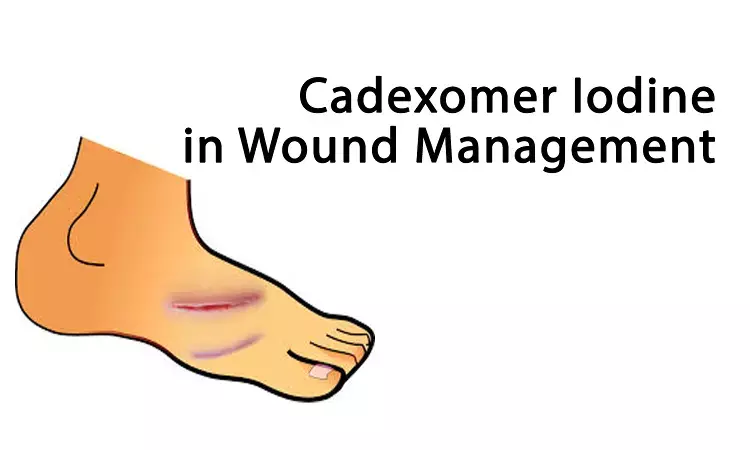- Home
- Medical news & Guidelines
- Anesthesiology
- Cardiology and CTVS
- Critical Care
- Dentistry
- Dermatology
- Diabetes and Endocrinology
- ENT
- Gastroenterology
- Medicine
- Nephrology
- Neurology
- Obstretics-Gynaecology
- Oncology
- Ophthalmology
- Orthopaedics
- Pediatrics-Neonatology
- Psychiatry
- Pulmonology
- Radiology
- Surgery
- Urology
- Laboratory Medicine
- Diet
- Nursing
- Paramedical
- Physiotherapy
- Health news
- Fact Check
- Bone Health Fact Check
- Brain Health Fact Check
- Cancer Related Fact Check
- Child Care Fact Check
- Dental and oral health fact check
- Diabetes and metabolic health fact check
- Diet and Nutrition Fact Check
- Eye and ENT Care Fact Check
- Fitness fact check
- Gut health fact check
- Heart health fact check
- Kidney health fact check
- Medical education fact check
- Men's health fact check
- Respiratory fact check
- Skin and hair care fact check
- Vaccine and Immunization fact check
- Women's health fact check
- AYUSH
- State News
- Andaman and Nicobar Islands
- Andhra Pradesh
- Arunachal Pradesh
- Assam
- Bihar
- Chandigarh
- Chattisgarh
- Dadra and Nagar Haveli
- Daman and Diu
- Delhi
- Goa
- Gujarat
- Haryana
- Himachal Pradesh
- Jammu & Kashmir
- Jharkhand
- Karnataka
- Kerala
- Ladakh
- Lakshadweep
- Madhya Pradesh
- Maharashtra
- Manipur
- Meghalaya
- Mizoram
- Nagaland
- Odisha
- Puducherry
- Punjab
- Rajasthan
- Sikkim
- Tamil Nadu
- Telangana
- Tripura
- Uttar Pradesh
- Uttrakhand
- West Bengal
- Medical Education
- Industry
Growing role of Cadexomer Iodine in wound care: Review

Iodine, a natural element of the halogen group, is an essential nutrient in the body. It possesses antiseptic properties and hence has been used throughout history in wound care. Iodine is a dark metallic crystalline solid (1) and is a component of the hormone thyroxine which aids in physical and mental development (2). As iodides, it is found in the seaweed and kelp. Its discovery was serendipitous by Barnard Courtois while manufacturing gun powder. Gay-Lussac named the new element 'iode' (Greek-ioeides) meaning violet (3).
There are various formulations of Iodine available presently. The most common ones include Povidone Iodine, Inadine, and Cadexomer iodine. Povidone-iodine is a combination of molecular iodine and polyvinylpyrrolidone surfactant/iodine complex having free Iodine at approximately 1 ppm. Inadine consists of a knitted viscose fabric impregnated with a polyethylene glycol base containing 10% povidone-iodine equivalent to 1% available iodine. Cadexomer-iodine contains 0.9% iodine within a three-dimensional starch lattice, formed into spherical microbeads.
Cadexomer Iodine is an effective debridement and antiseptic agent for chronic exudative wounds.
Studies showed cadexomer iodine to be as effective as or more effective than standard treatments
The above article has been published by Medical Dialogues under the MD Brand Connect Initiative. For more details on Cadexomer Iodine, click here
References:
Dr Prem Aggarwal, (MD Medicine, DNB Medicine, DNB Cardiology) is a Cardiologist by profession and also the Co-founder and Chairman of Medical Dialogues. He focuses on news and perspectives about cardiology, and medicine related developments at Medical Dialogues. He can be reached out at drprem@medicaldialogues.in
Dr Kamal Kant Kohli-MBBS, DTCD- a chest specialist with more than 30 years of practice and a flair for writing clinical articles, Dr Kamal Kant Kohli joined Medical Dialogues as a Chief Editor of Medical News. Besides writing articles, as an editor, he proofreads and verifies all the medical content published on Medical Dialogues including those coming from journals, studies,medical conferences,guidelines etc. Email: drkohli@medicaldialogues.in. Contact no. 011-43720751


